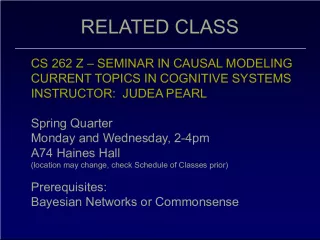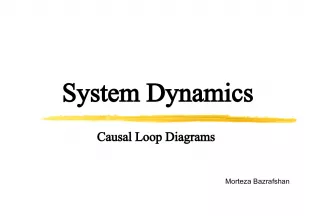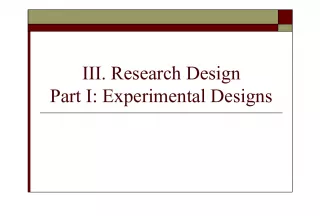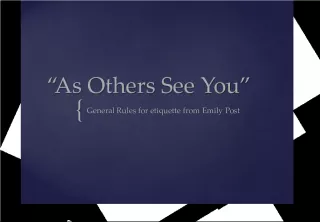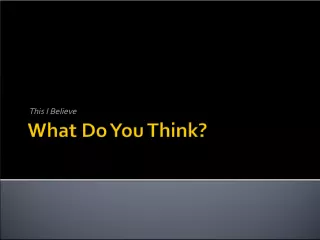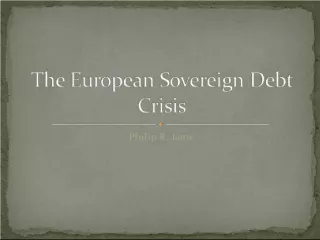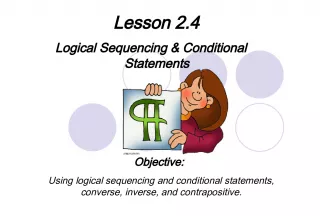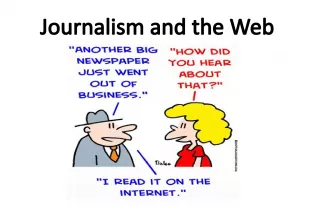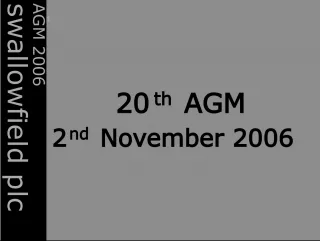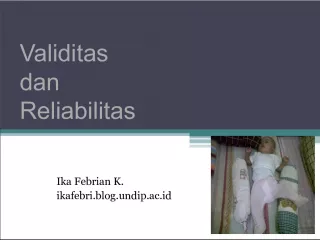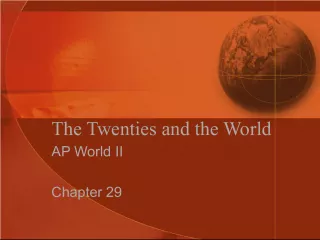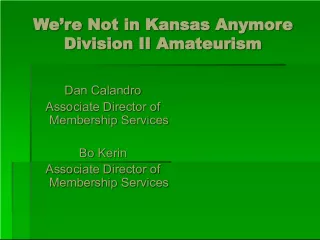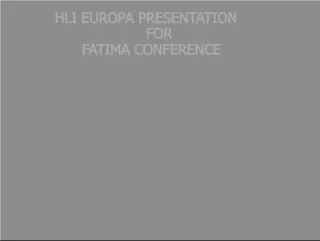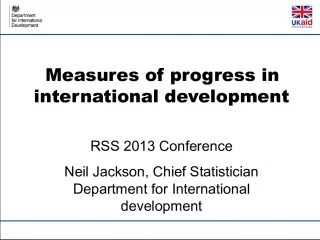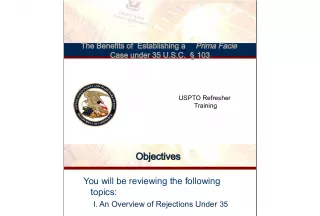The Post Hoc Fallacy and Causal Reasoning


This chapter discusses the Post Hoc Fallacy, which is a type of causal inference fallacy. It argues that just because one thing comes before another, it does not necessarily mean that the first thing caused the second. The chapter also provides examples and expressions of the fallacy.
- Uploaded on | 0 Views
-
 klaus-dieter
klaus-dieter
About The Post Hoc Fallacy and Causal Reasoning
PowerPoint presentation about 'The Post Hoc Fallacy and Causal Reasoning'. This presentation describes the topic on This chapter discusses the Post Hoc Fallacy, which is a type of causal inference fallacy. It argues that just because one thing comes before another, it does not necessarily mean that the first thing caused the second. The chapter also provides examples and expressions of the fallacy.. The key topics included in this slideshow are Post Hoc Fallacy, Causal Reasoning, Bad Reasoning, Correlation vs. Causation, Inference Fallacy,. Download this presentation absolutely free.
Presentation Transcript
1. Chapter 10 Errors and Fallacies in Causal Reasoning The Post Hoc Fallacy this is sometimes called the post hoc ergo propter hoc fallacy. The full phrase means: after this, therefore because of this And it is a causal inference fallacy. (304) Just because one thing comes before another does not mean that the first thing was causally relevant to the second, and this is just what the post hoc fallacy claims. It is classic bad reasoning.
2. The form of the post hoc fallacy can be expressed as follows: A occurred, then B occurred. Therefore, A caused B . OR Events of type C happen immediately prior to events of type E . Therefore, events of type C cause events of type E . When B is undesirable, this pattern is often extended in reverse: Avoiding A will prevent B .
3. The Post Hoc Fallacy is committed whenever one reasons to a causal conclusion based solely on the supposed cause preceding its "effect". Of course, it is a necessary condition of causation that the cause precede the effect, but it is not a sufficient condition. Thus, post hoc evidence may suggest the hypothesis of a causal relationship, which then requires further testing, but it is never sufficient evidence on its own. Post Hoc also manifests itself as a bias towards jumping to conclusions based upon coincidences. Superstition and magical thinking include Post Hoc thinking; for instance, when a sick person is treated by a witch doctor, or a faith healer, and becomes better afterward, superstitious people conclude that the spell or prayer was effective. Since most illnesses will go away on their own eventually, any treatment will seem effective by Post Hoc thinking. This is why it is so important to test proposed remedies carefully, rather than jumping to conclusions based upon anecdotal evidence.
4. Examples of Post Hoc Fallacy From Attacking Faulty Reasoning by T. Edward Damer: "I can't help but think that you are the cause of this problem; we never had any problem with the furnace until you moved into the apartment." The manager of the apartment house, on no stated grounds other than the temporal priority of the new tenant's occupancy, has that the tenant's presence has some causal relationship to the furnace's becoming faulty. From With Good Reason by S. Morris Engel More and more young people are attending high schools and colleges today than ever before. Yet there is more juvenile delinquency and more alienation among the young. This makes it clear that these young people are being corrupted by their education.
5. Further Example of Post Hoc Fallacy The only policy that effectively reduces public shootings is right-to-carry laws. Allowing citizens to carry concealed handguns reduces violent crime. In the 31 states that have passed right-to-carry laws since the mid-1980s, the number of multiple-victim public shootings and other violent crimes has dropped dramatically. Murders fell by 7.65%, rapes by 5.2%, aggravated assaults by 7%, and robberies by 3%.
6. Chapter 10 The fallacy of objectionable cause : occurs when a person argues for a causal interpretation on the basis of limited evidence and makes no attempt to rule out alternative explanations of the event. (306) Sometimes this fallacy is called the false cause fallacy . This kind of fallacy happens a lot in election debates and it is similar to a confusion of correlation with causation.
7. This fallacy has the following general form: A and B are associated on a regular basis. Therefore A is the cause of B. The general idea behind this fallacy is that it is an error in reasoning to conclude that one thing causes another simply because the two are associated on a regular basis. More formally, this fallacy is committed when it is concluded that A is the cause of B simply because they are associated on a regular basis. The error being made is that a causal conclusion is being drawn from inadequate evidence. The Questionable Cause Fallacy is actually a general type of fallacy. Any causal fallacy that involves an error in a reasoning due to a failure to adequately investigate the suspected cause is a fallacy of this type.
8. Examples of Objectionable Cause: "Defense attorney Ellis Rubin claims Ronald Zamora's constant exposure to TV crime shows such as re-runs of 'Kojak' and 'Police Woman' was responsible for 'diseasing his mind and impairing his behavior controls.' 'Without the influence of television ... there would not have been any crime,' Rubin argued." Index Journal When investigating a small pond a group of graduate students found that there was a severe drop in the fish population. Further investigation revealed that the fishes' food supply had also been severely reduced. At first the students believed that the lack of food was killing the fish, but then they realized they had to find what was causing the decline in the food supply. The students suspected acid rain was the cause of both the reduction in the fish population as well as the food supply. However, the local business council insisted that it was just the lack of food that caused the reduction in the fish population. Most of the townspeople agreed with this conclusion since it seemed pretty obvious that a lack of food would cause fish to die.
9. Chapter 10 Begging the Question in a Causal Account: This is just a case of begging the question in a situation where there is some causal claim our account in question. So, a person assumes the conclusion or something logical equivalent to the causal conclusion as support for it. See page 308 for a detailed example.
10. Chapter 10 Causal Slippery Slope Arguments: Causal Slippery Slope fallacy claims in the premises that some action would be wrong because it would let off a series of side effects ending ultimately in general calamity. Causal slippery slope fallacies can also go in the other direction claiming that something would be good because it would give rise to certain good effects. Fixing these fallacious arguments generally requires providing cogent subarguments for the premises.
11. The General Pattern of Slippery Slope If A happens, then by a gradual series of small steps through B , C ,, X , Y , eventually Z will happen, too. Z should not happen. Therefore, A should not happen, either.
12. Example of Slippery Slope If today you can take a thing like evolution and make it a crime to teach it in the public school, tomorrow you can make it a crime to teach it in the private schools, and the next year you can make it a crime to teach it to the hustings or in the church. At the next session you may ban books and the newspapers. Soon you may set Catholic against Protestant and Protestant against Protestant, and try to foist your own religion upon the minds of men. If you can do one you can do the other. Ignorance and fanaticism is ever busy and needs feeding. Always it is feeding and gloating for more. Today it is the public school teachers, tomorrow the private. The next day the preachers and the lectures, the magazines, the books, the newspapers. After [a]while, your honor, it is the setting of man against man and creed against creed until with flying banners and beating drums we are marching backward to the glorious ages of the sixteenth century when bigots lighted fagots to burn the men who dared to bring any intelligence and enlightenment and culture to the human mind. Source: Clarence Darrow, The Scopes Trial, Day 2
